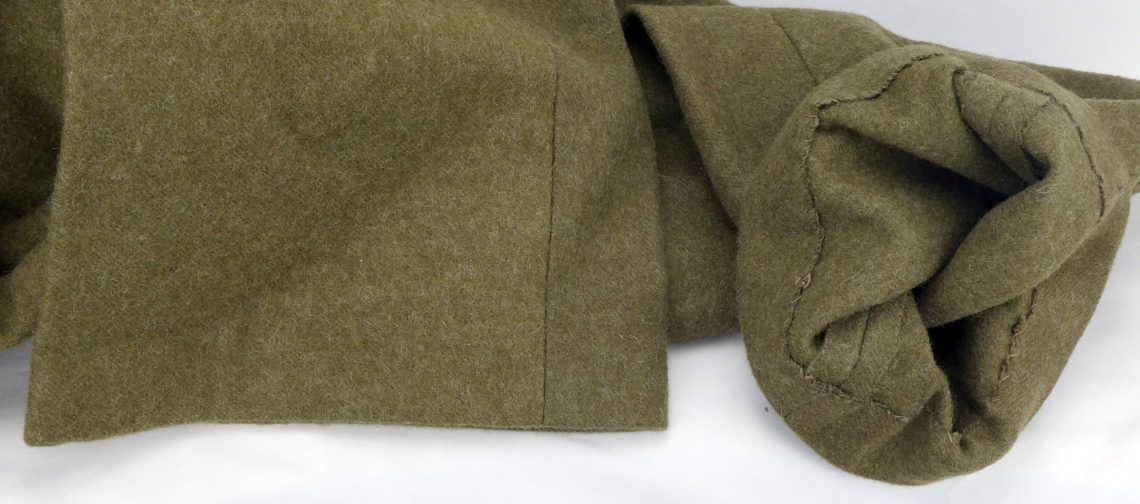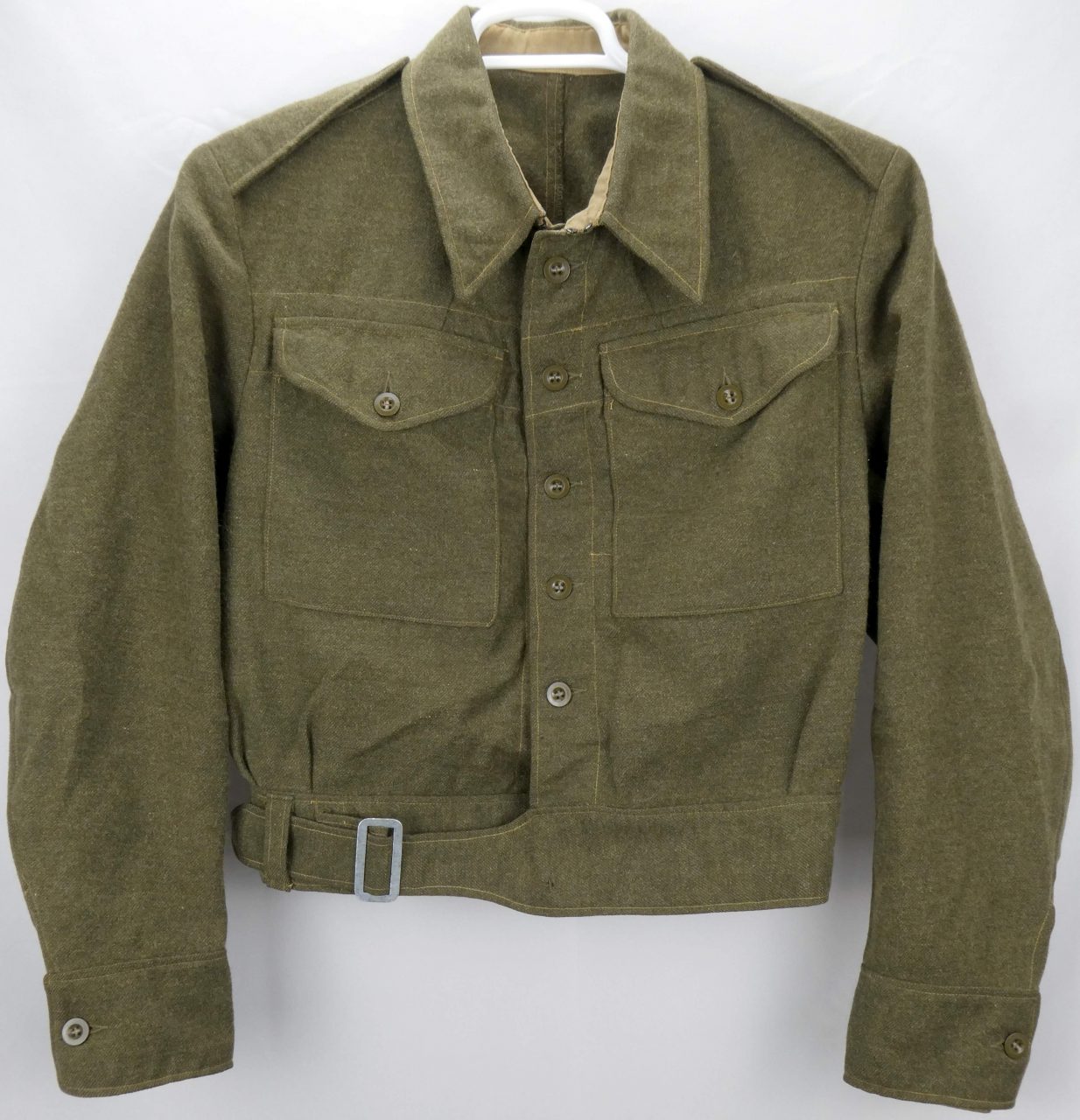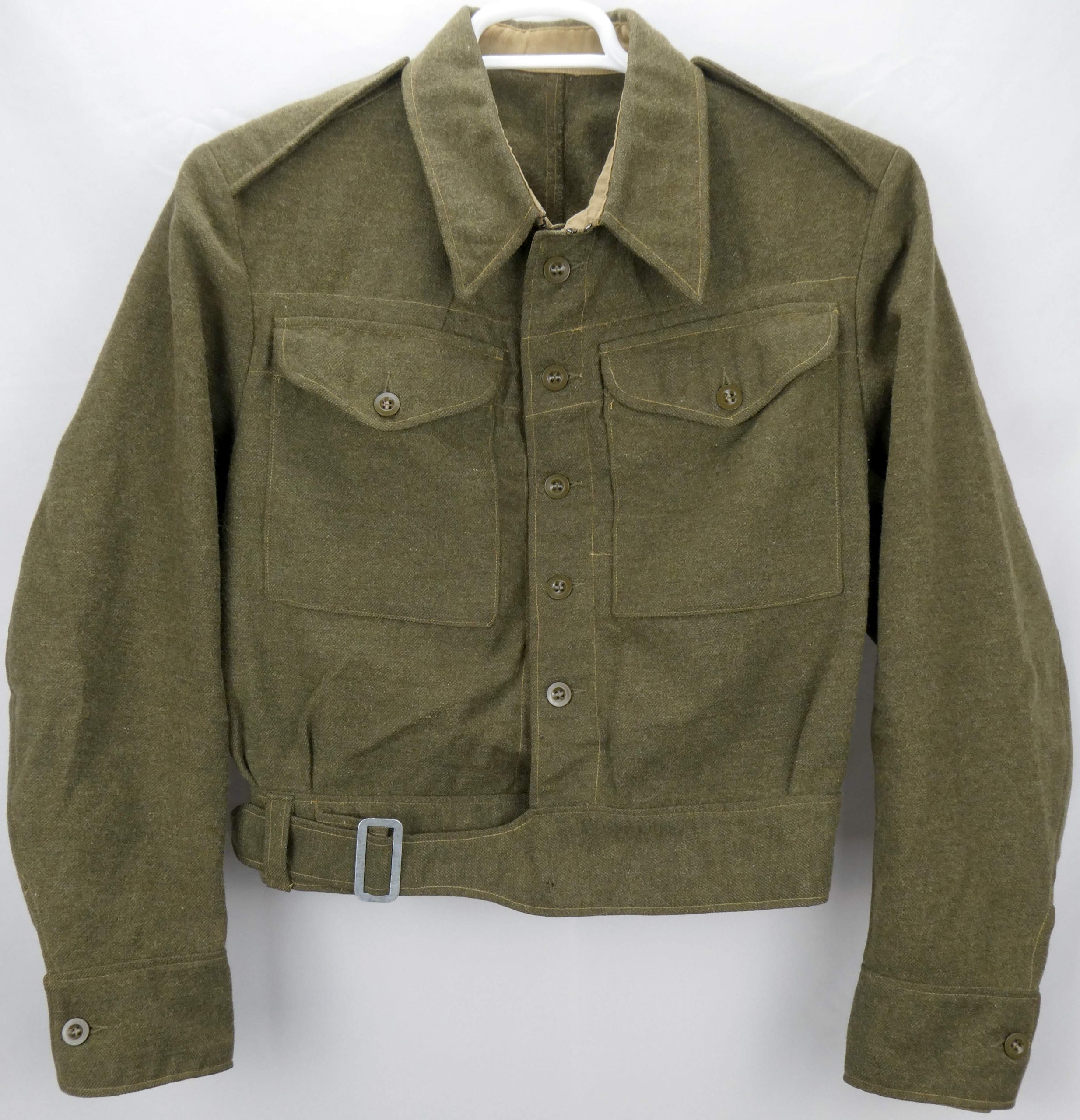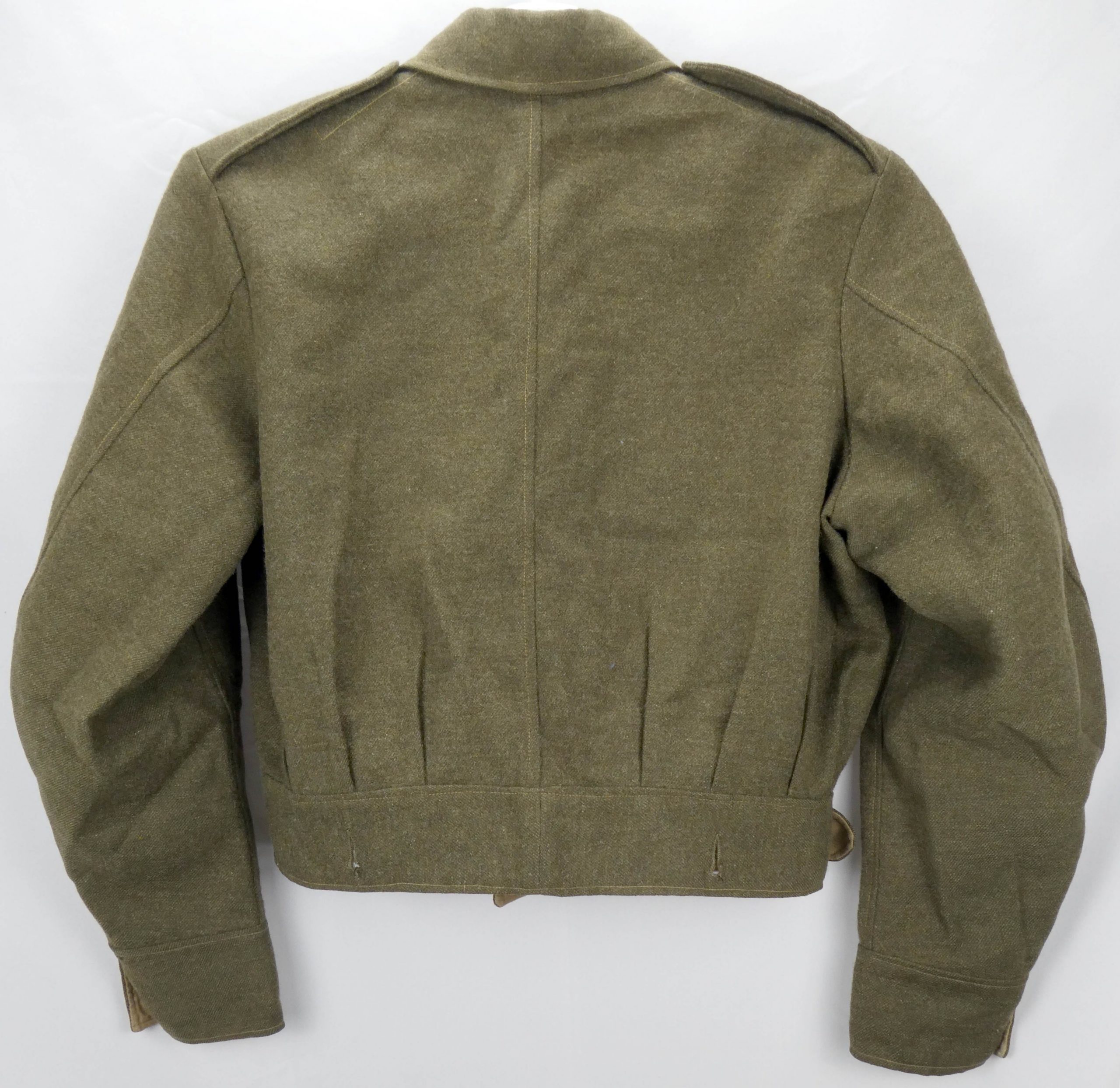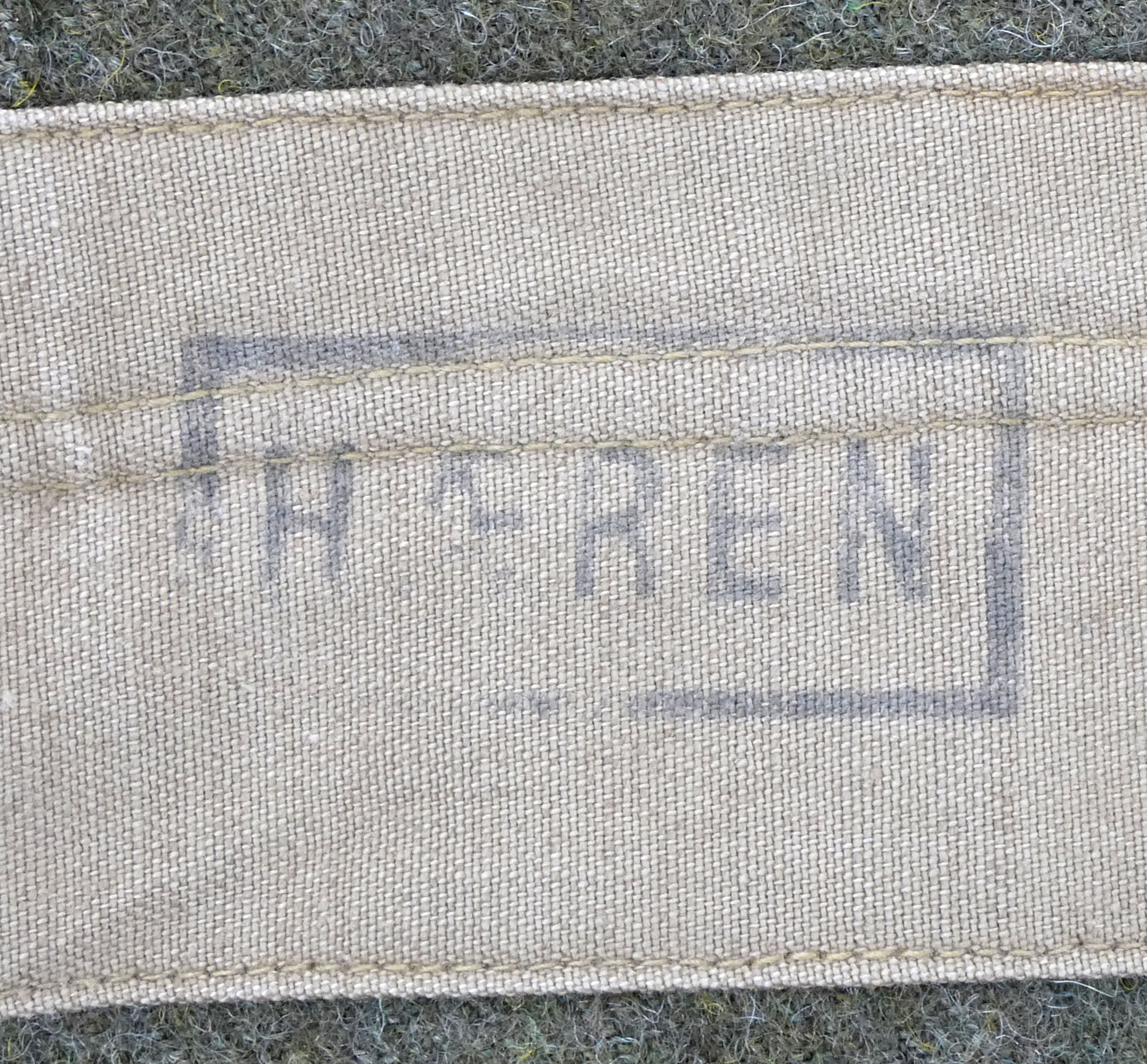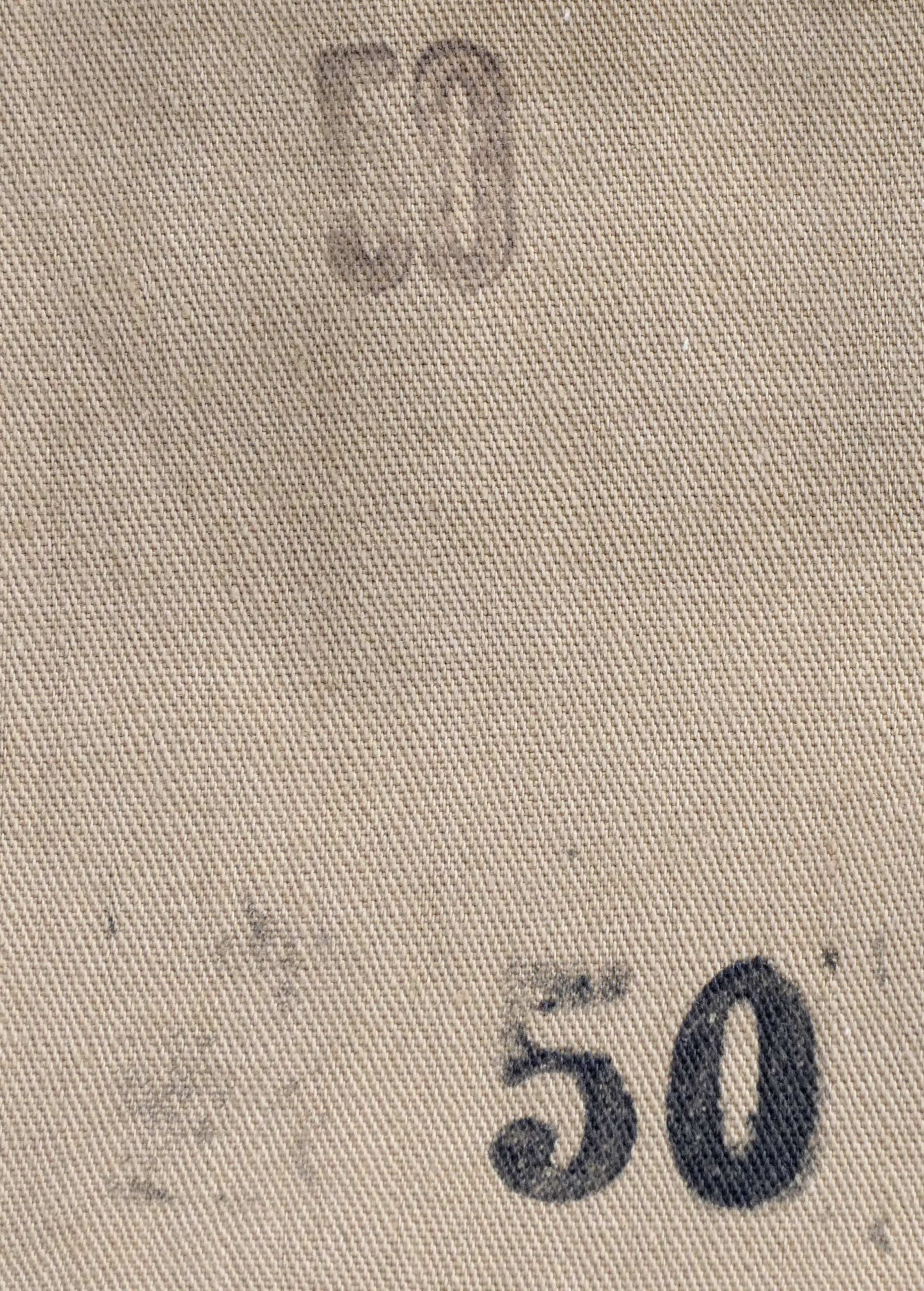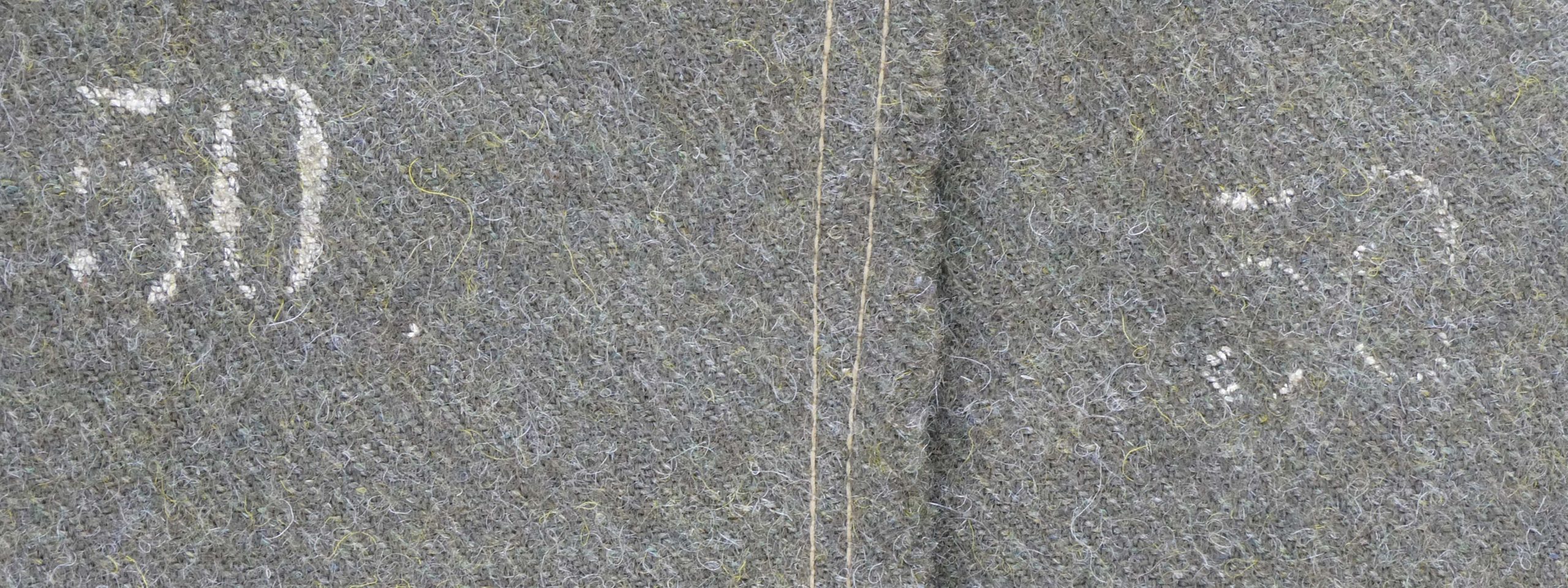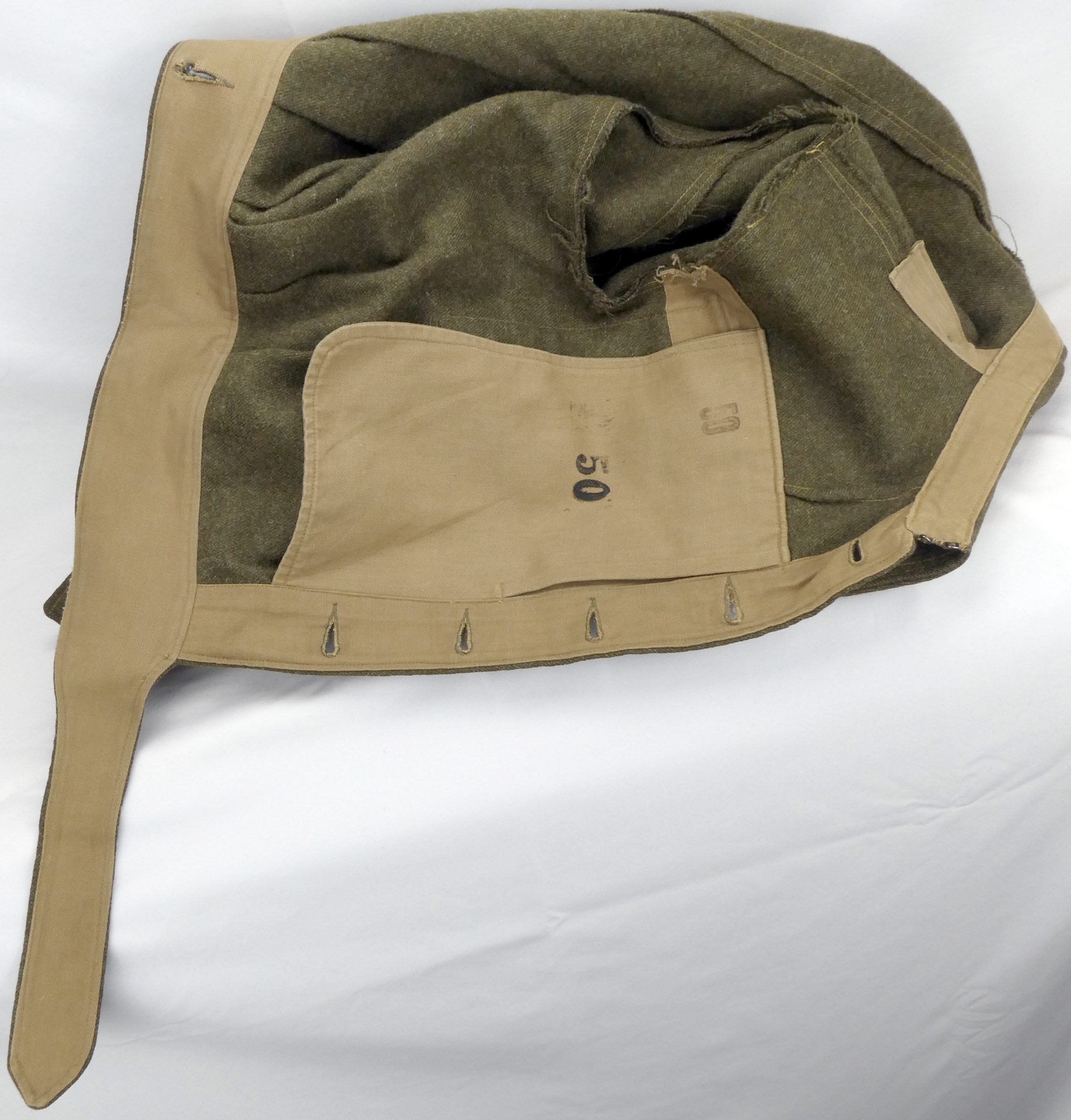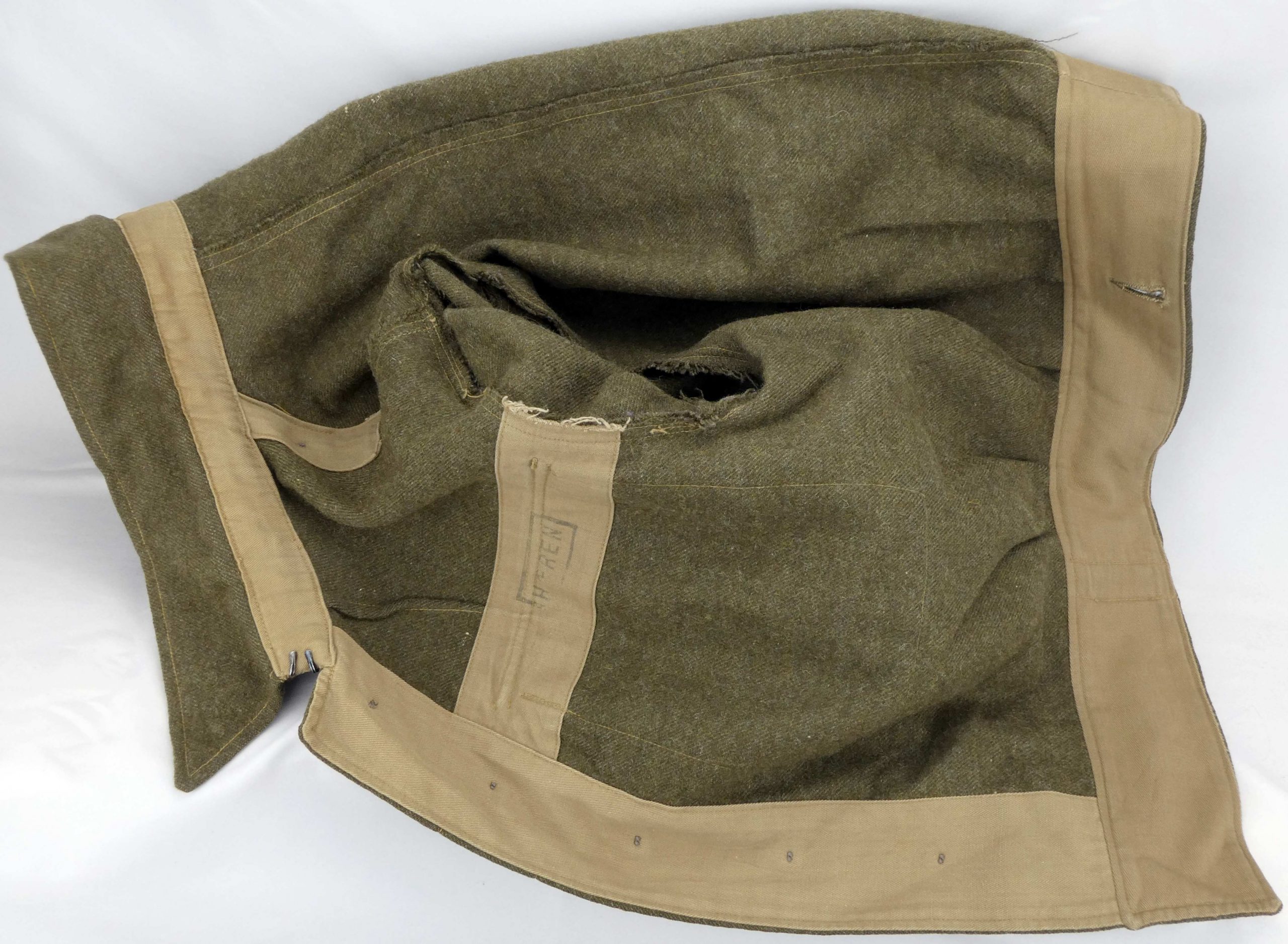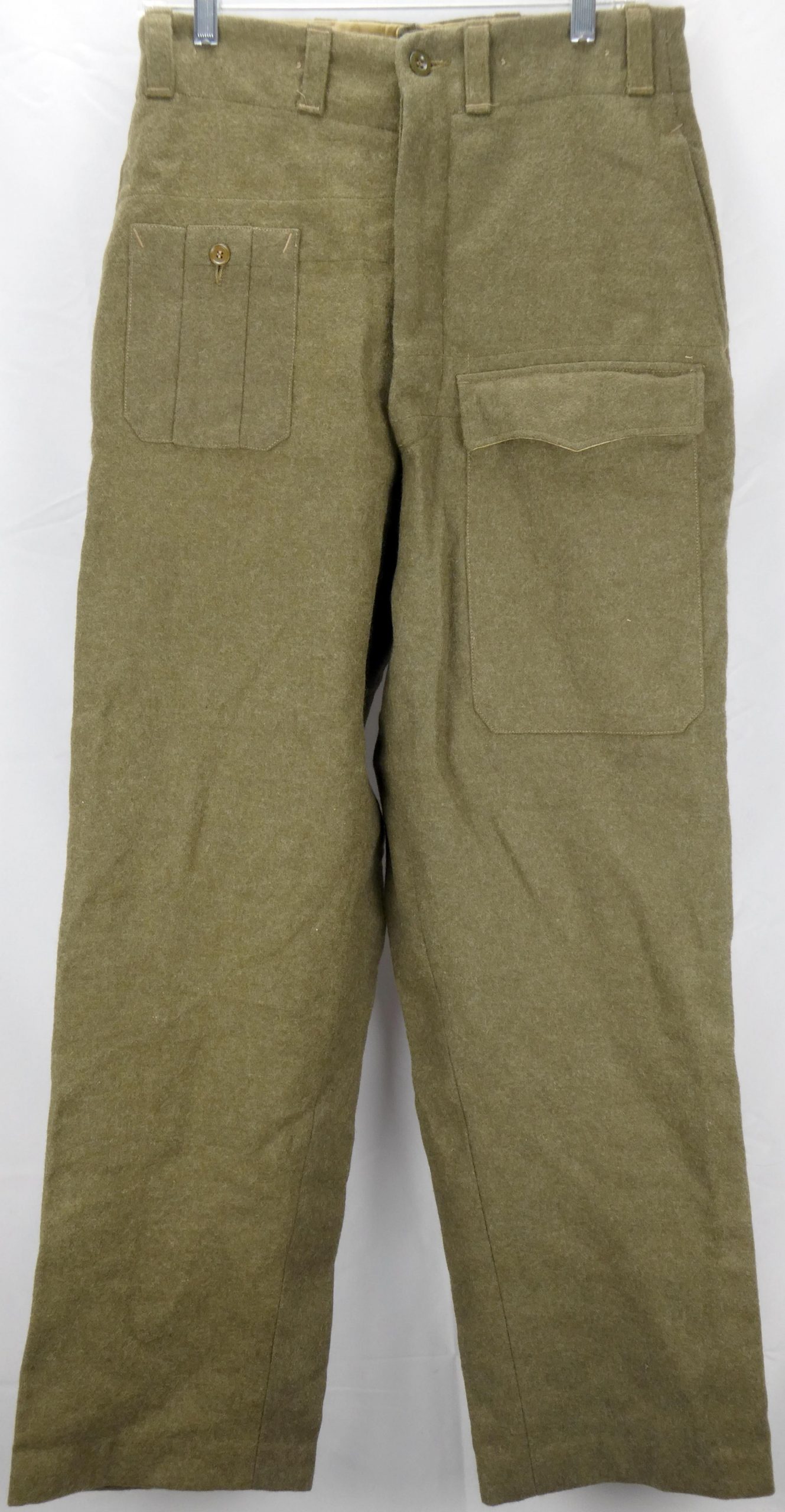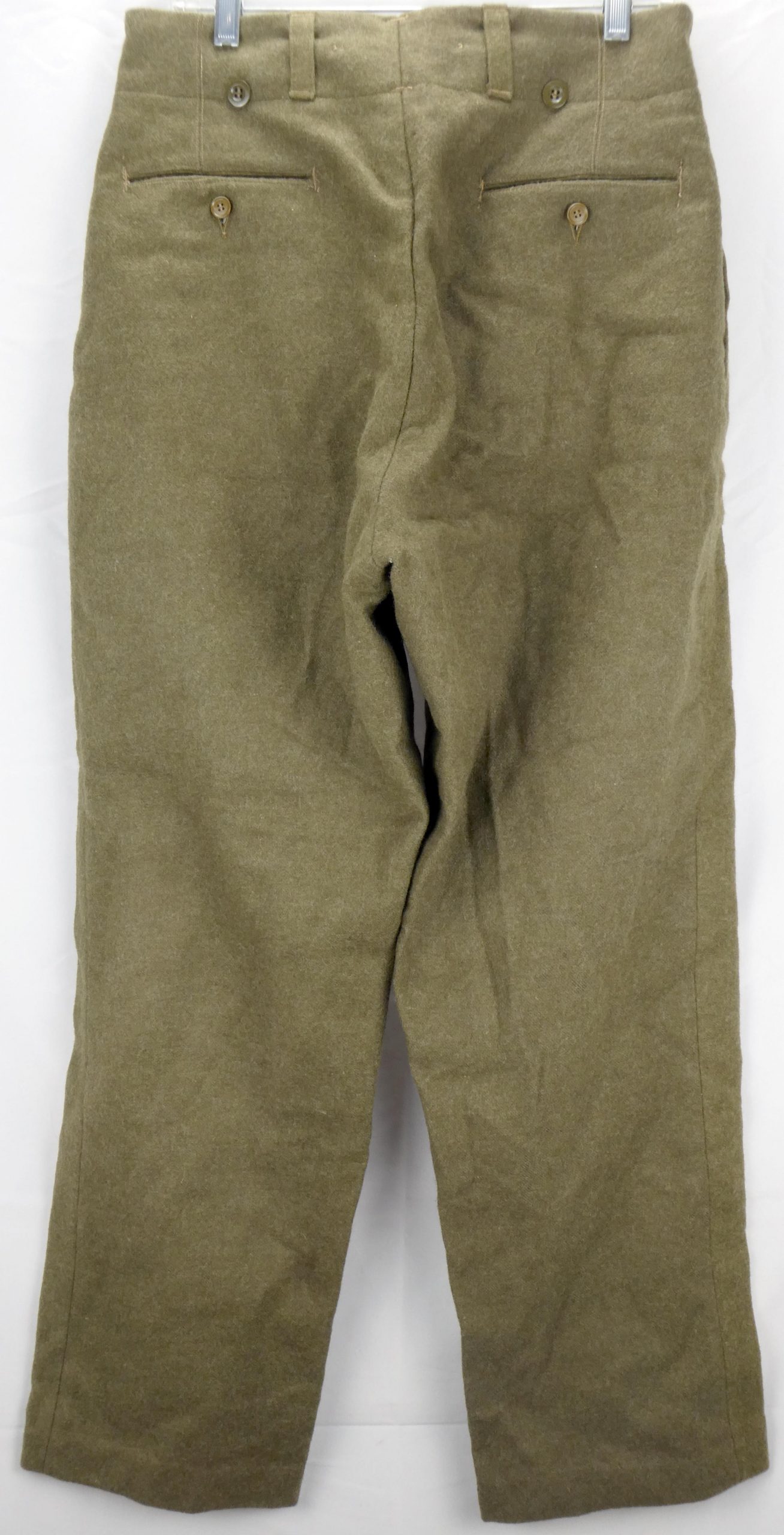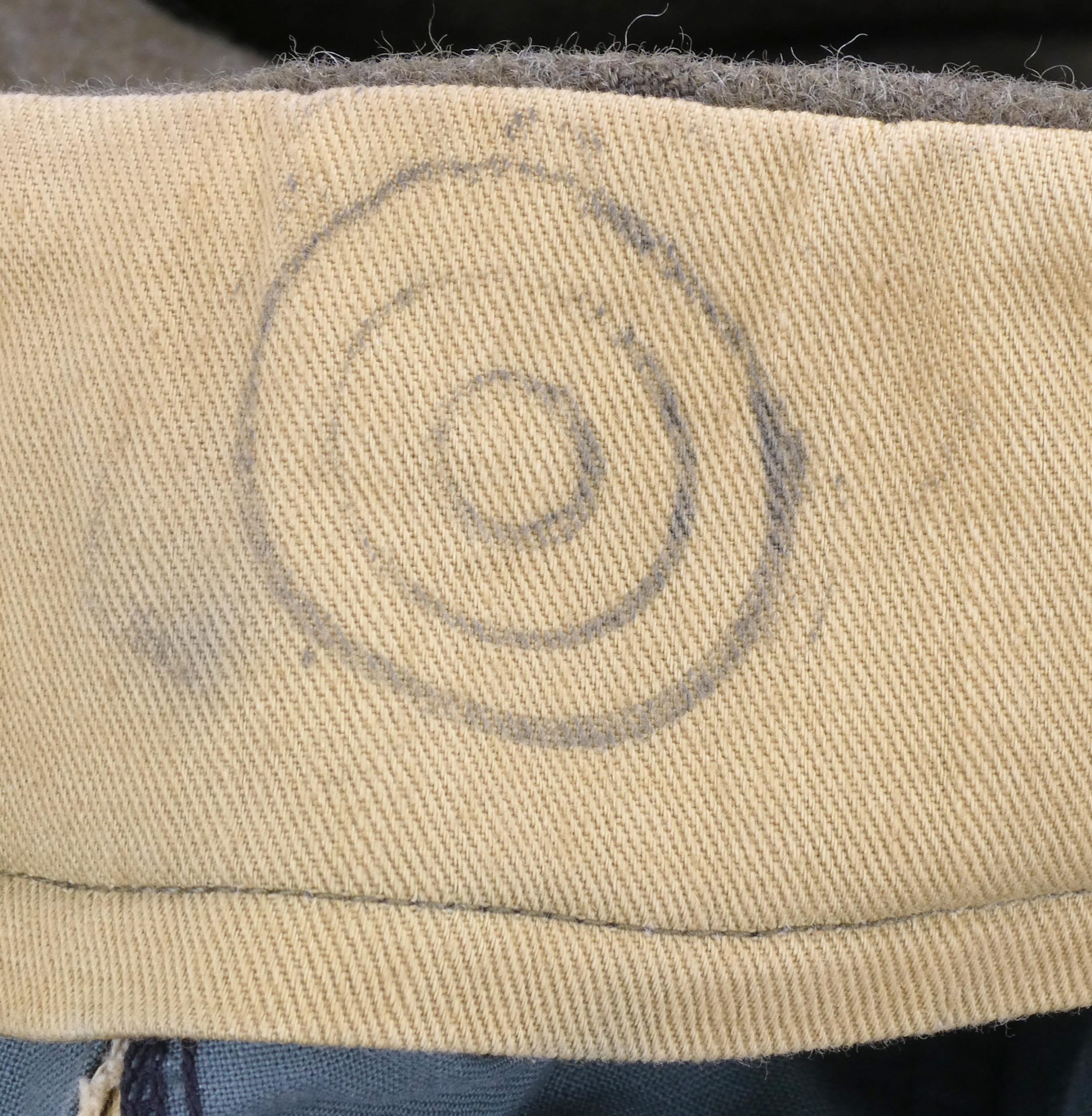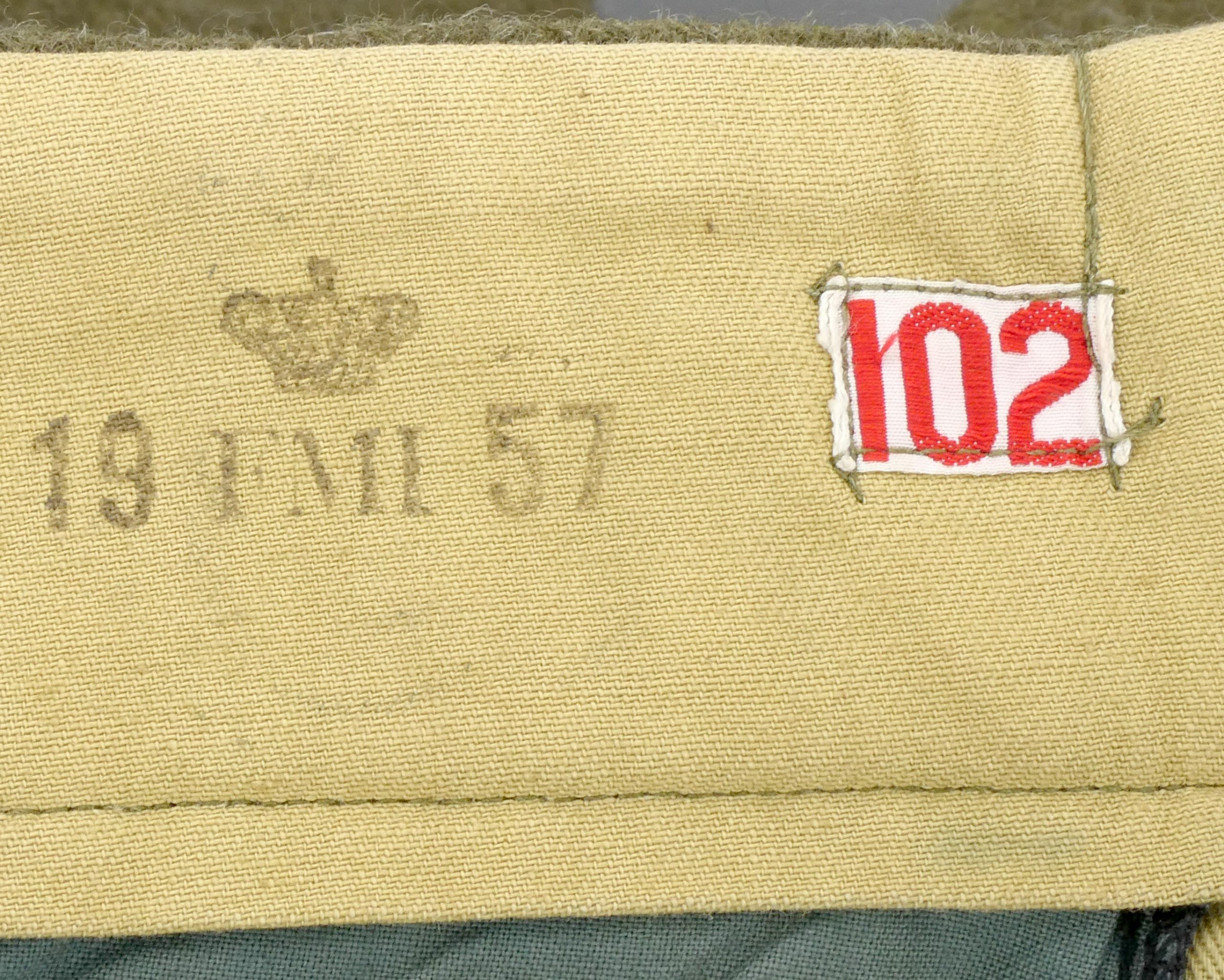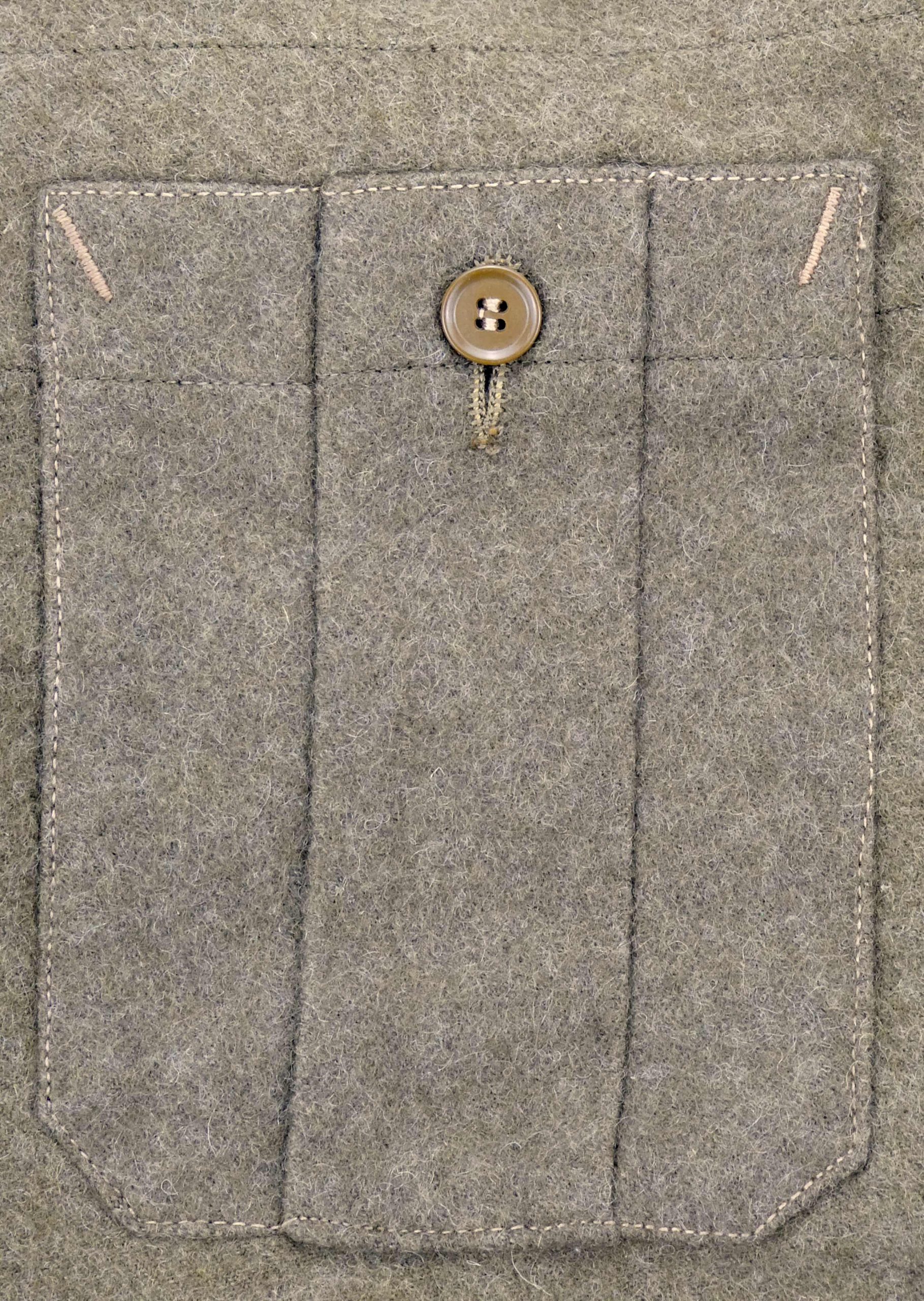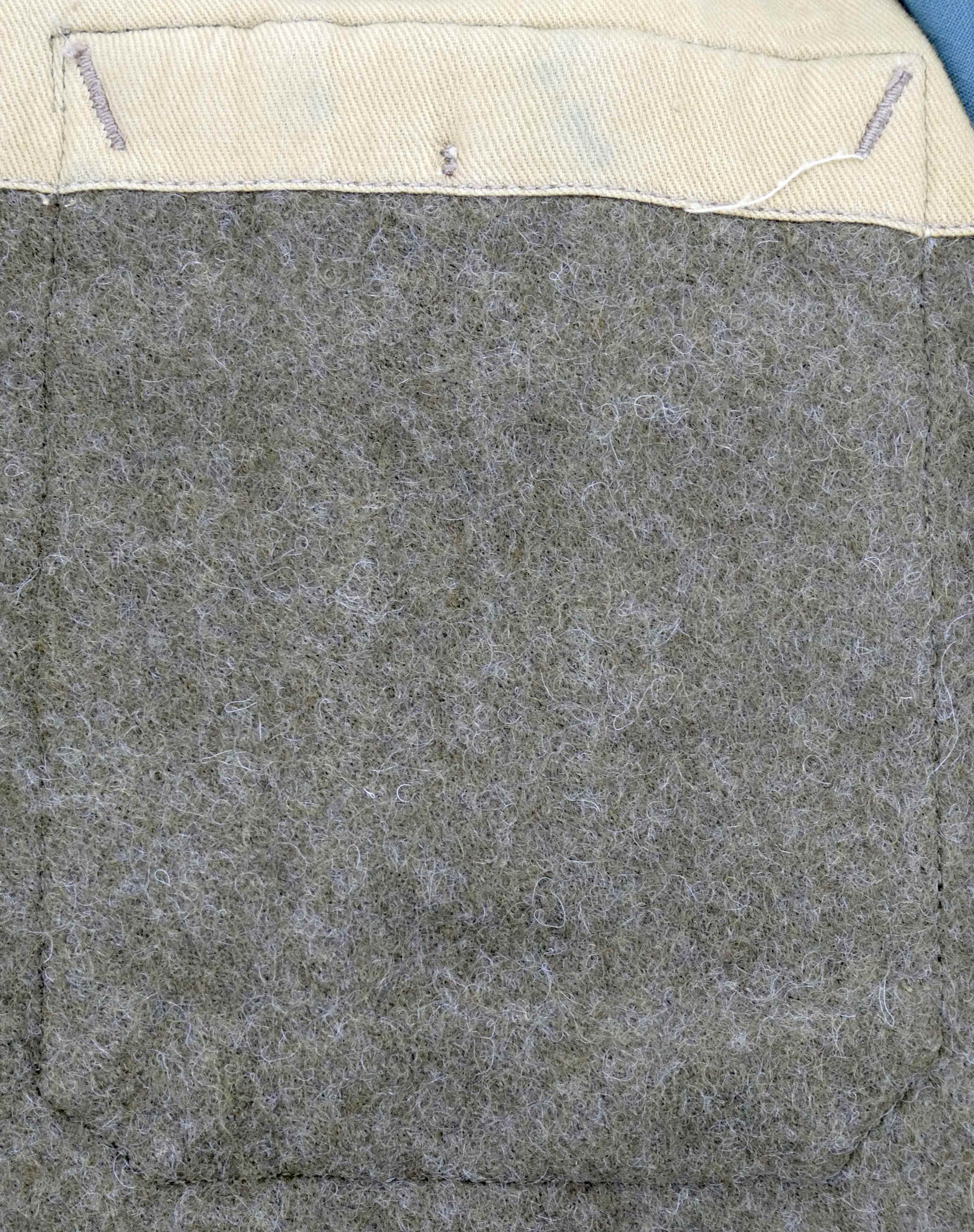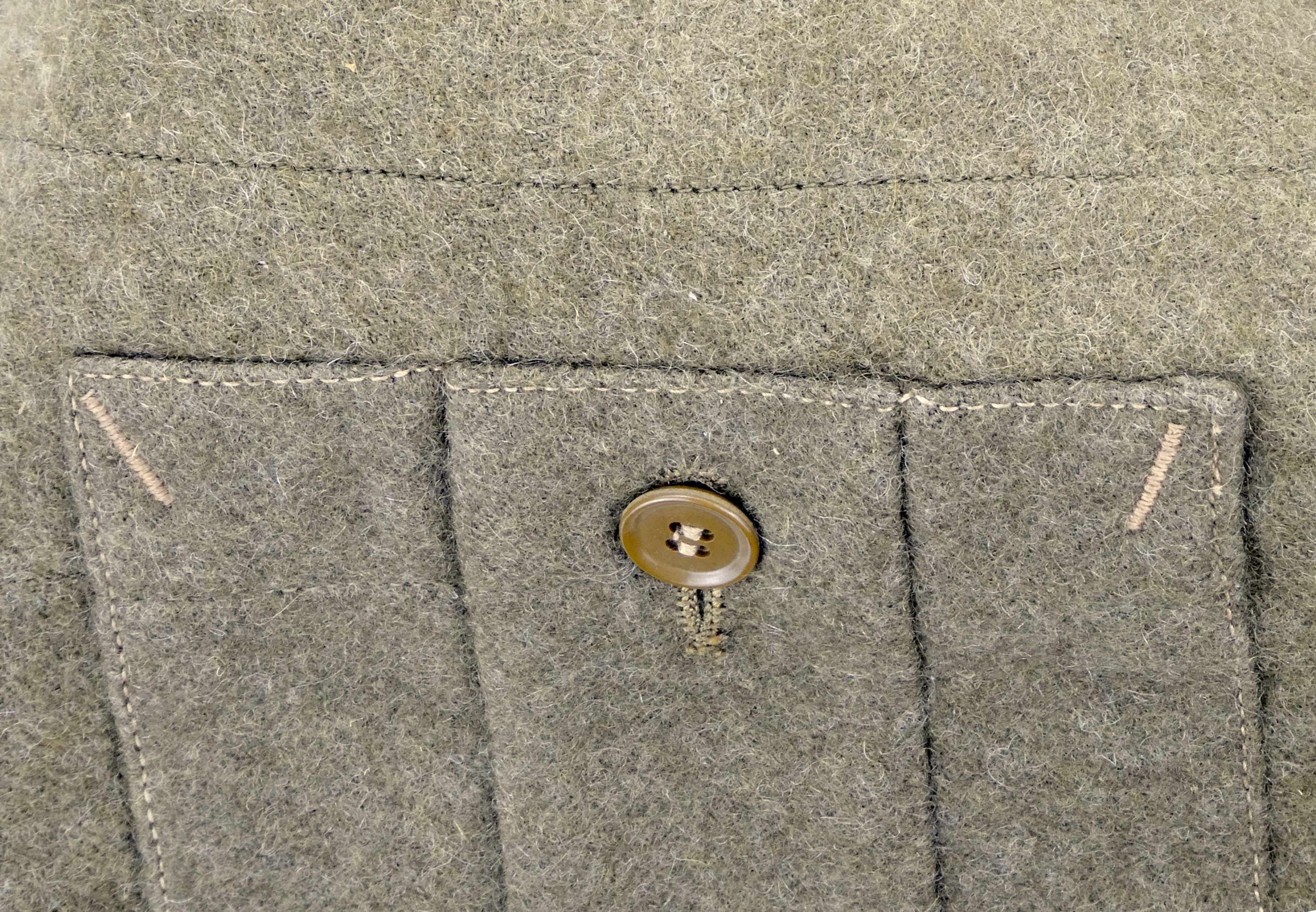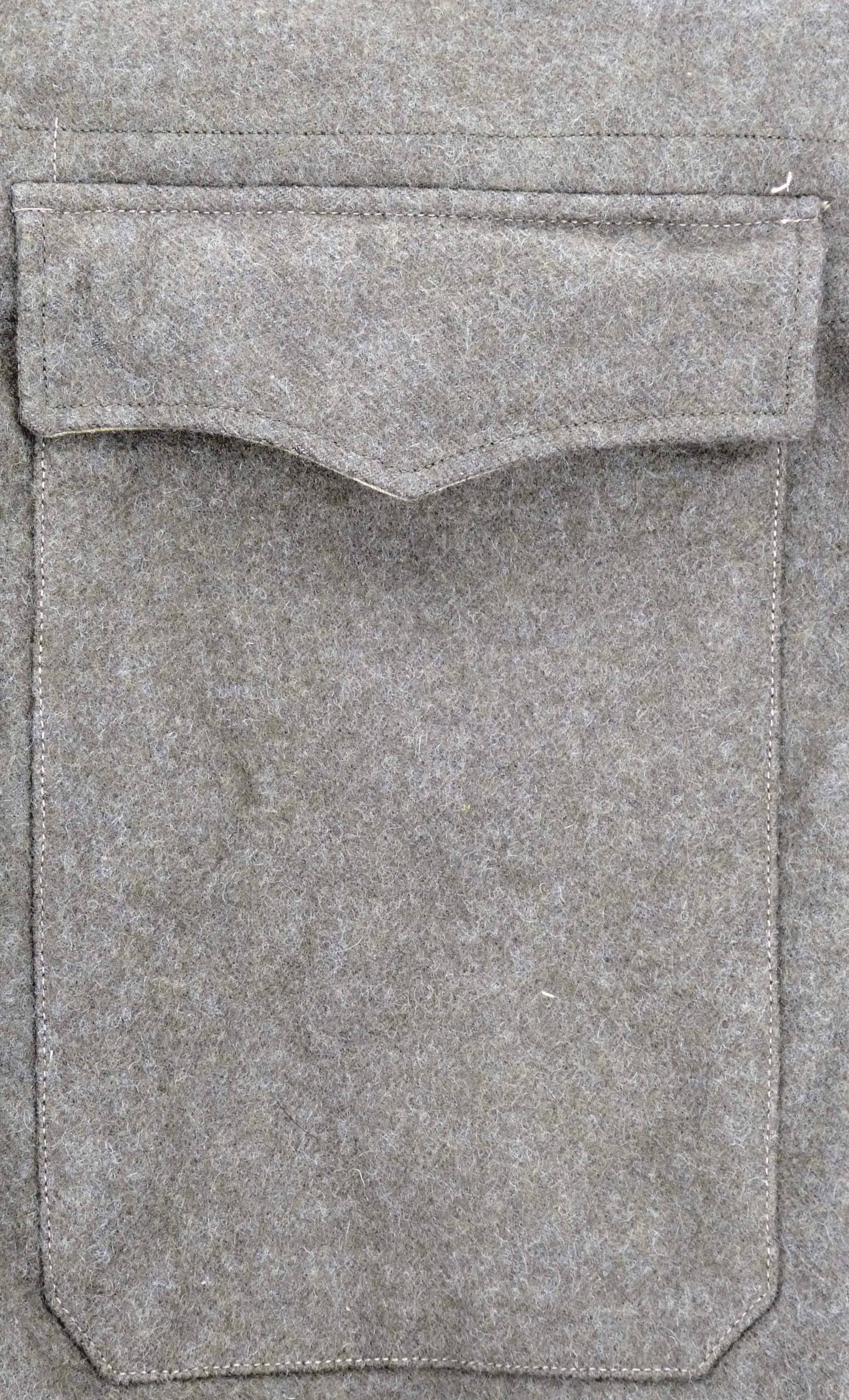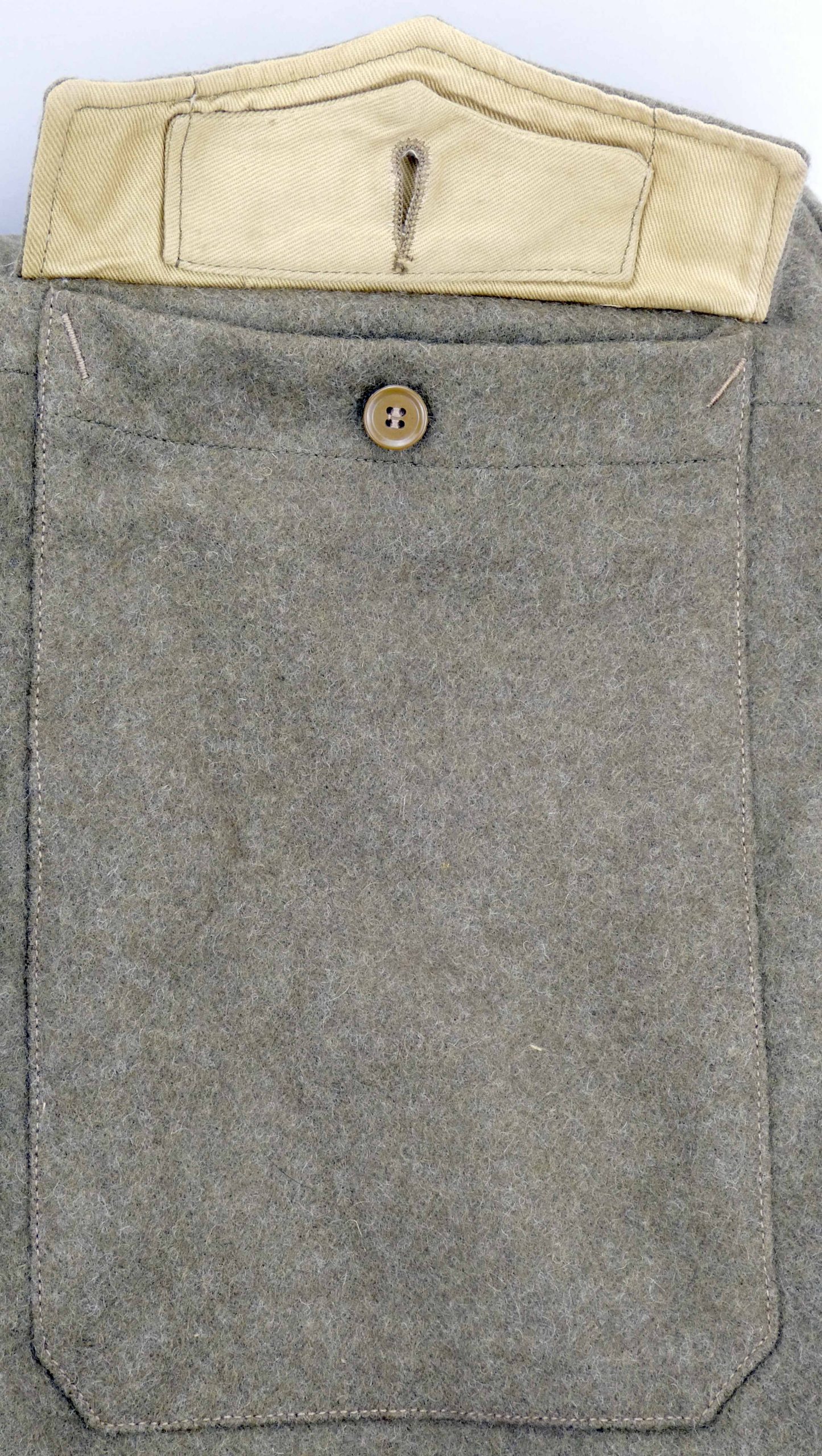Blouse:
Same cut as British Pattern 40, so this was likely produced immediately after WW2 (if authentic).
Stamps:
“Haeren” means that the country of origin is either Denmark or Norway.
Pockets:
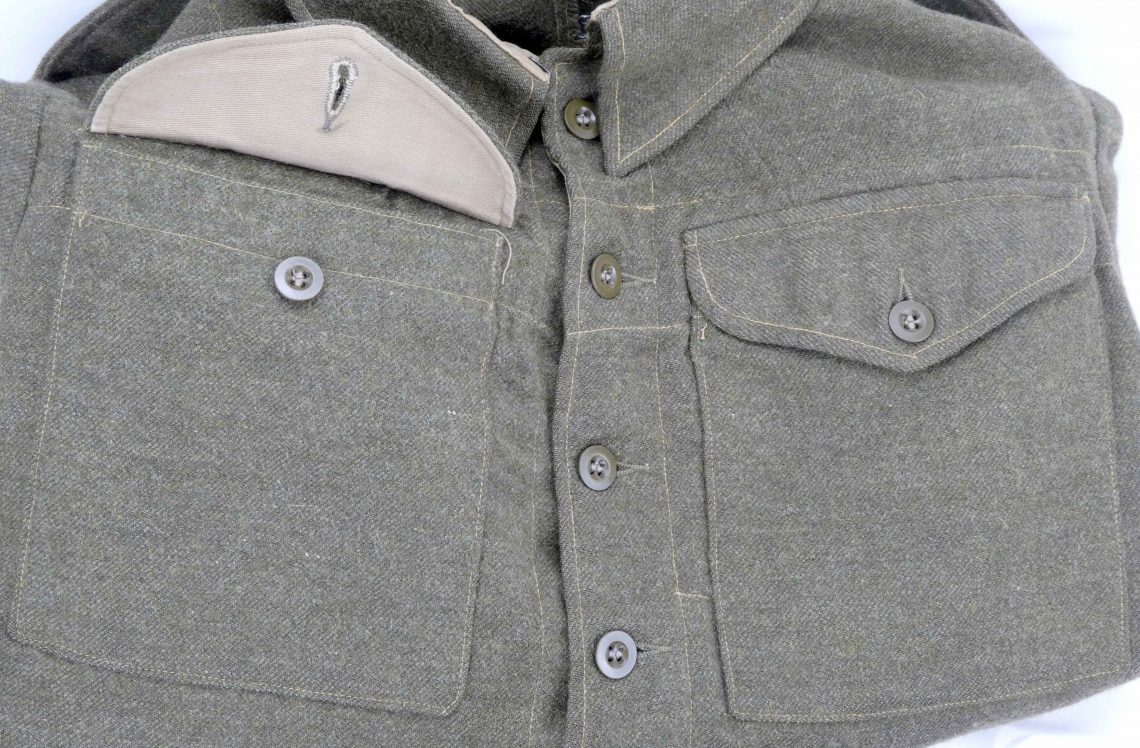
Epaulettes:
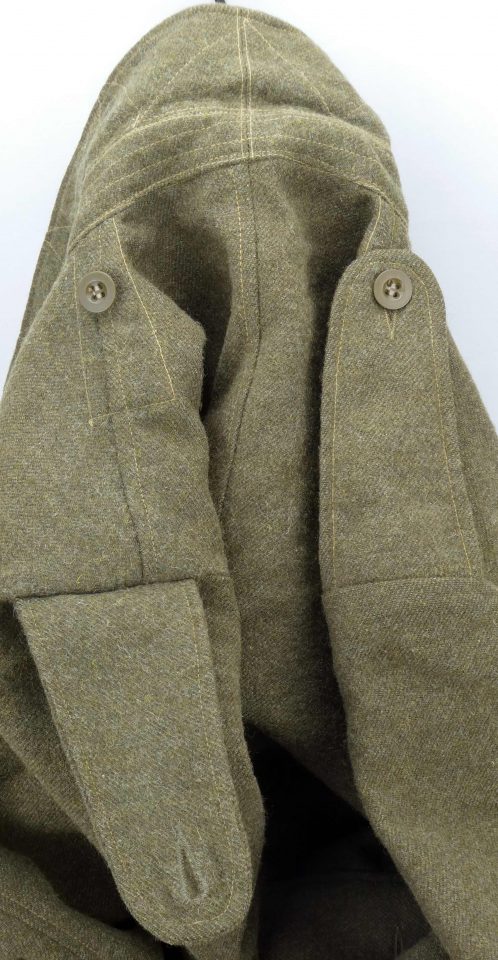
Zigzag reinforcement stitching on back of collar.
Buckle:
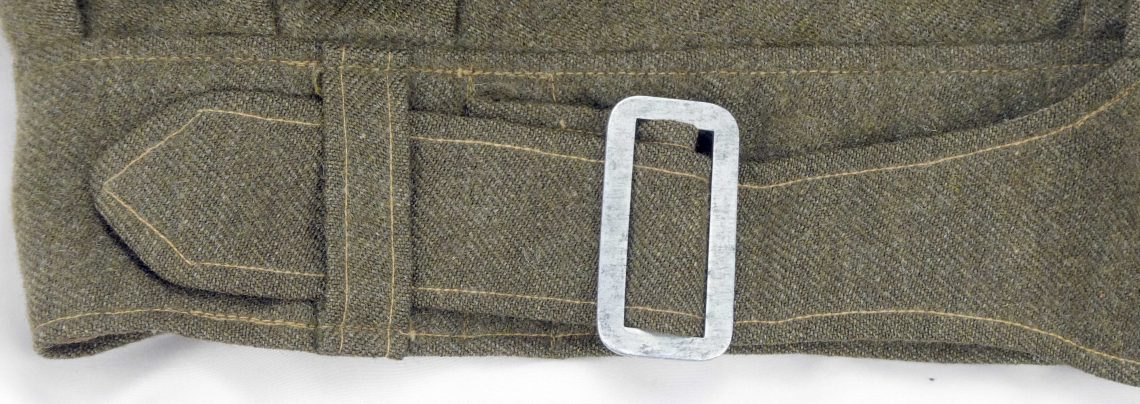
Buckle is much simpler than British version.
Cuffs:
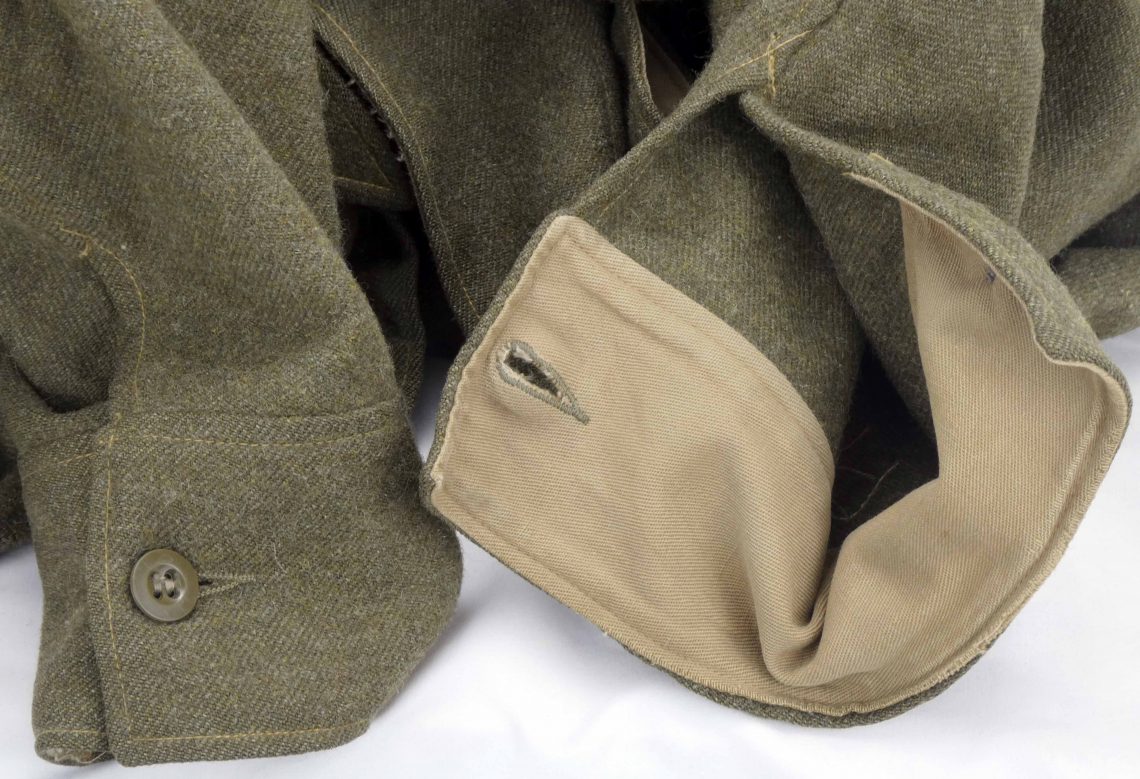
Inside:
Pants:
These pants were probably tailored to resemble WW2 Pattern 37 or 40 Battledress trousers for theatrical purposes. It is unclear if these belong with the blouse above.
Stamps:
Crown appears to be Danish (matches crown on Danish P37 webbing).
Cosmetic Thigh Pocket:
This “bandage pocket” on the left thigh (as worn) is purely a cosmetic patch and is completely non-functional since it is stitched closed at the top, meaning it cannot be opened.
Cargo Pocket:
Fly:
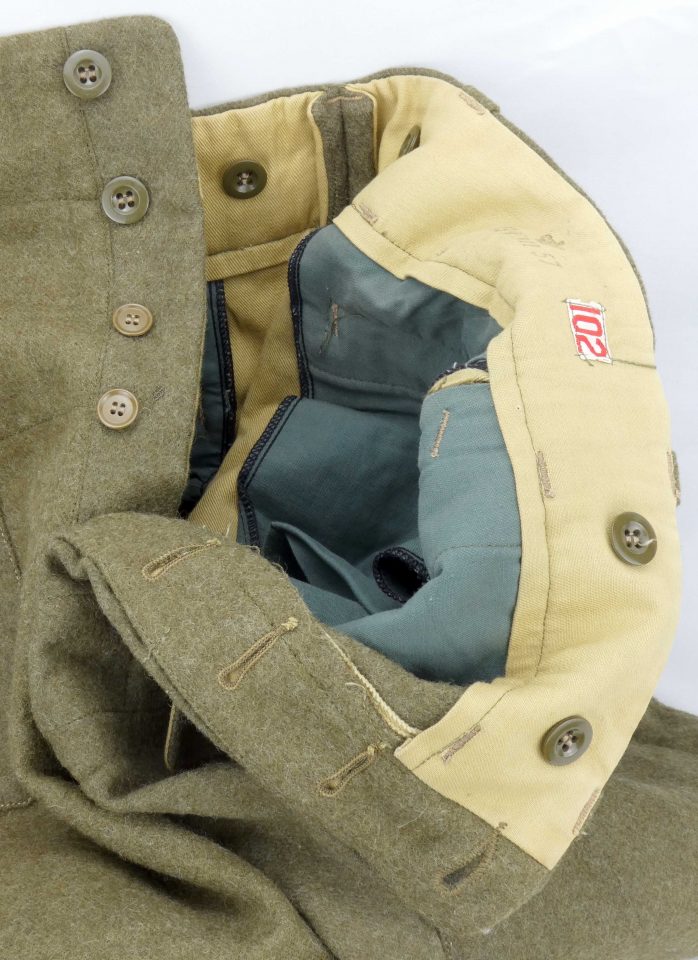
Button fly.
Inside:
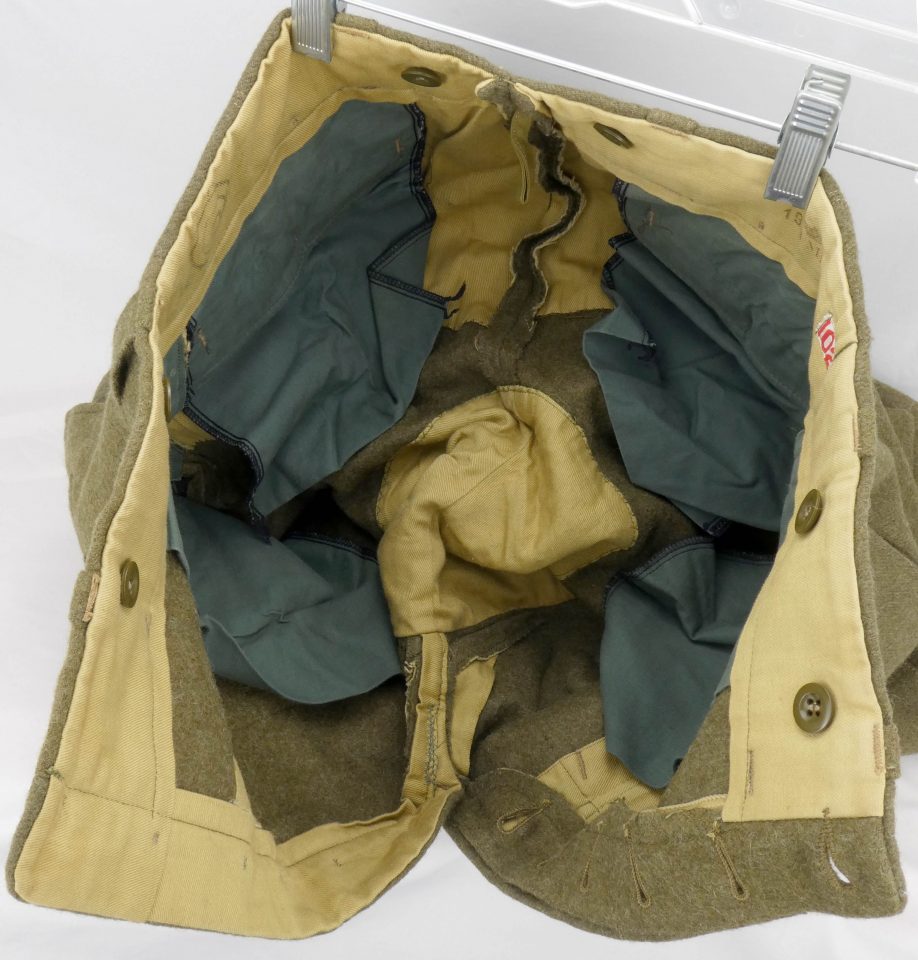
Ankles:
